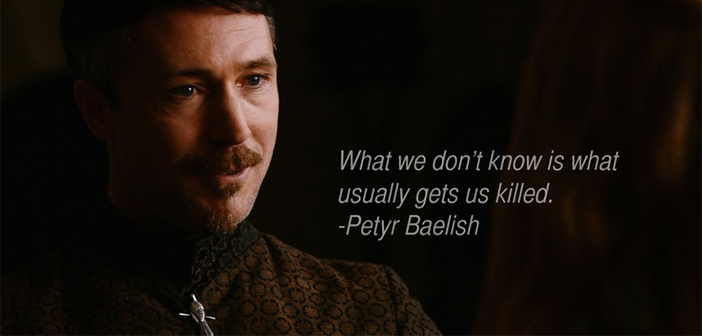Watch Your Donors Backwards
 In my effort to consume Game of Thrones content pre-finale, I stumbled across a wonderful, nutty, and wonderfully nutty experiment: someone who had never seen the show before watched all the episodes in reverse.
In my effort to consume Game of Thrones content pre-finale, I stumbled across a wonderful, nutty, and wonderfully nutty experiment: someone who had never seen the show before watched all the episodes in reverse.
At first, it’s superficially interesting: who is this person who jumped out a window? Why did that church explode? What happened to this person that made them drink so much? But then it got a bit profound:
[C]ompared to following the narrative, it is much closer to how we encounter people in adult life, in media res. We don’t meet new colleagues or acquaintances via origin stories with swelling violins or rumbling timpani telling us how to feel about them. We meet them as testy, anxious, or guarded humans with many other quirks tied to unknown histories that require patience to uncover. … Constantly I have to ask, How did you get here? Why are you the way that you are?
This is what happens when we meet a donor with a gift alone. We have that one datum: on this day, this person made a gift of this amount.
We can make certain assumptions about them from this:
- They are more likely to give again to the organization than a member of the general public is to give to the organization
- They are not wholly averse to the medium through which they gave the gift (e.g., if they made an online gift, they are willing to use a credit card online)
- If there was a campaign involved, it at least didn’t turn them off from giving.
- Some deductions based on timing – e.g., if they gave at end of year, they might be more likely to give next end of year; if they gave after a disaster, they may be more likely to give after another disaster.
From these assumptions, we construct a marketing program. A newly acquired mail donor will get mail since they don’t mind it. They’ll get it as soon as possible after their first gift since they are more likely to give. And when they lapse, as 75-80% will do, we’ll try to reacquire them with the same campaign as before since they were OK with it before. All reasonable tactics from reasonable assumptions. In this way, we can build our own Dothraki horde, Wildling army, or Unsullied legions – large, powerful, anonymous.
But those aren’t the donors who we care about or who care about us.
The key to caring – them for you, you for them – is in asking those questions: how did you get here? Why are you the way that you are? It’s in learning those unknown stories – the backstories that provide the reason for the gift.
Many won’t tell us. That’s OK; they weren’t going to be with us long anyway. The mere act of asking, of showing an interest, should stimulate giving online or offline.
And for those who tell us, we can begin to understand their backstory. We don’t have to wonder what media they want to give through, or how often they want to hear from us, or why they gave. We can know. Knowing is better than wondering.
Once we know, that’s the basis for empathy and relationship. We can do as a mass level, to be sure; we need not give up economies of scale. Even nods toward showing you know why someone gives can increase response and retention. And knowing how committed and satisfied someone is can start different donor journeys that lead to greater retention.
Gauging our donors exclusively on a transaction gives us a tiny bit of information exclusive to a single moment in time. It’s our job to dig backward; only by unfogging the past can we see, and direct, the future more clearly.
Nick



Love this. Especially “Even nods toward showing you know why someone gives can increase response and retention. And knowing how committed and satisfied someone is can start different donor journeys that lead to greater retention.” We have to start caring more about what donors want and need, less about what we want and need. Because we want money, and donors want a whole lot of other things. We won’t get their money until we know what they want to purchase with it.
Great post Nick. Solving the “why” is critical to unraveling the mystery of donor behavior. I always love to see a question in thank you communications that tries to capture “the why”. Sadly, few organizations ask and capture this key data point.
Thanks Claire and Charlie – the great thing about these efforts is they hopefully pay for themselves; the lift you get at each level of customization is significant and hopefully outpaces customization costs.
This is great! As fundraisers, and people, we show up to where a person is now with so little information about how they got there. This makes me want to create a unique survey for donors after a second or third gift who didn’t respond to an initial survey. I would think there would be higher response rates and more chance they would share some information.
I’m not sure it would uncover origin stories as unique as Game of Thrones without a face-to-face conversation. But that can be the next step.
Yes, absolutely! The key is for that survey to be about things that will benefit them – I can let you know my thoughts, priorities, and preference so you can treat me better.